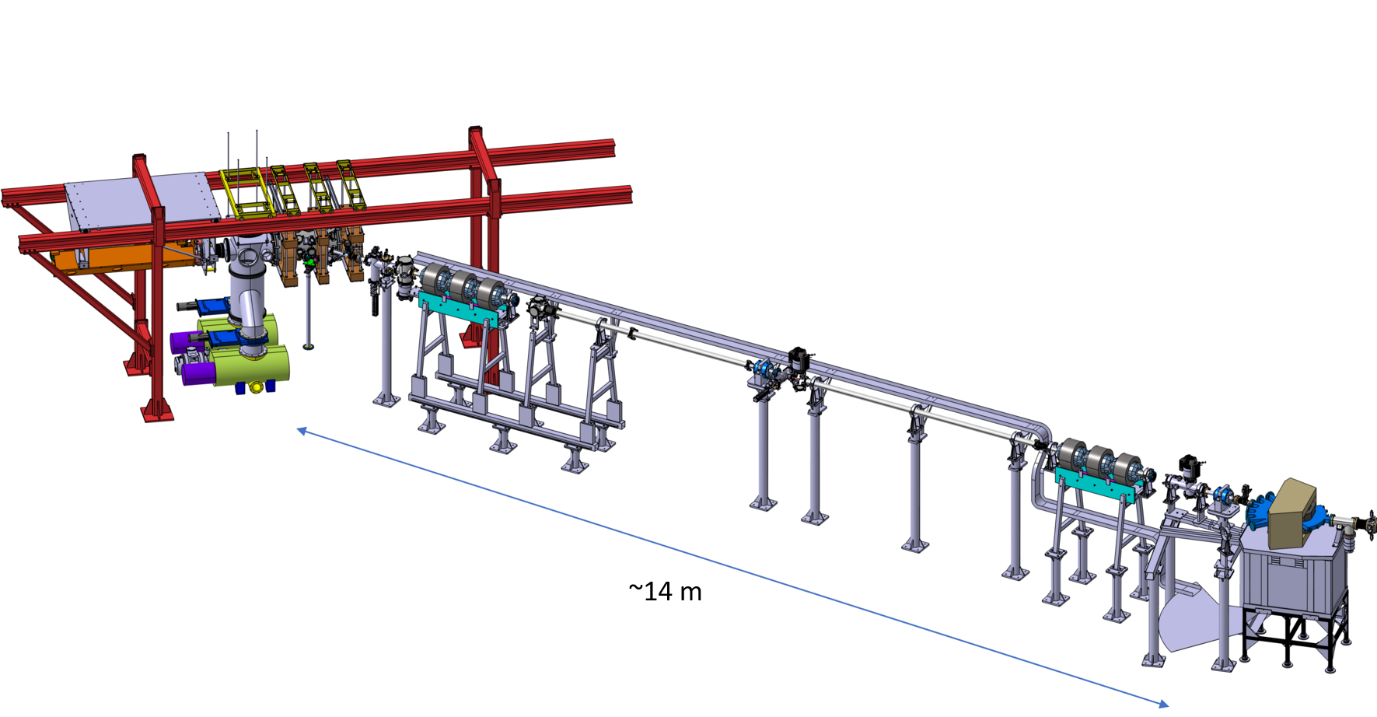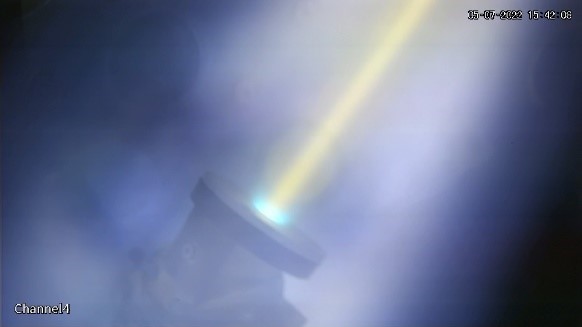The new research facility Upgraded Pilot-PSI (UPP) aims to contribute to the research of dynamic and steady-state plasma-material interaction during high-flux plasma exposures by combining the capabilities of a high-flux magnetized linear plasma generator with operando ion beam analysis. The UPP linear plasma generator has become operational in 2021, including post-mortem ion beam analysis. Operando ion beam analysis is expected to become operational on UPP in 2023. 
The plasma in the linear plasma generator is generated by a DC cascaded arc, and magnetized by 3 sets of copper coils. Two EH4200 roots pumps are employed to generate the vacuum conditions inside the generator, required to maximize the plasma flux that is hitting the target material. Available diagnostics include Thomson scattering to measure the plasma electron density and temperature profiles, optical emission spectroscopy the measure the plasma particle composition, and an IR camera and pyrometer to measure the target temperature profile. UPP is equipped with operando NRA-p and RBS analysis for elemental sample characterization.
1-3 MeV 4He and 3He ions are used for non-destructive measurement of the plasma induced modification of the material composition of the target as a function of depth, up to several µm into the material. For operando ion beamline measurements during plasma exposures of the target, the UPP ion beamline includes an electron gas stripper and a compact electromagnet (‘mini-magnet’) at approximately 20 cm from the target. The gas stripper is used to limit charge exchange interactions of the (initially) single charged beam ions with gas molecules inside the plasma generator on their way to the target. The ‘mini-magnet’ is needed to compensate the Lorentz force on the ions by the magnetic field of the plasma generator. Both the electron stripper and the ‘mini magnet’ are expected to become operational in 2023.
The main parameters to characterize the UPP linear plasma generator are:
- Plasma parameters relevant to detached divertor operation in ITER and DEMO:
- Electron temperature: Te ~ 0.1 - 2 eV
- Electron density: ne ~ 1019 – 1020 m-3
- Particle flux on target material: ~ 1023 – 1024 m-2s-1
- Heat flux on target up to ~ 4 MWm-2
- Neutral background pressure typically 2-3 Pa
- Magnetic field up to 160 mT
- Typical target size: circular disks up to 60 mm diameter
- Plasma elements: Ar, H2, D2, He.
- Long timescale, steady state capability
A photo of a UPP helium plasma is shown below.

Interested in performing research on UPP?
UPP is a large facility that is open for external users in collaboration with our in-house research groups. If you are interested in participating in experiments at UPP, check out the application procedure.